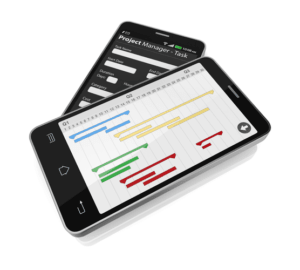Mastering Mental Health Billing: A Detailed Guide

Mental health practices can leverage the technology to carry out the VOB process. Even though there are limitations to these options, this might save up a lot of time for the medical staff. You can run a verification of benefits (VOB) to see if your patient is covered. You will have a greater understanding of your patient’s insurance program after this process enabling you to treat and serve them appropriately.
- Apart from the confusing ICD Codes with CPT code assignment errors, the other kind of mistakes that could occur include undercoding or upcoding.
- This step is important for making mental health billing easier, because though many patients have active insurance, your services may not be covered as a benefit.
- Again, if you’re tired reading about the ins and outs of insurance billing, you might save time, money, and headache delegating this part of your private practice.
- This includes basic demographics, insurance details, and, often, pre-authorization for services.
- In fact, one study found that healthcare professionals spent twice as long on administrative paperwork as they did with patients.
- A clearinghouse is an in-between service between you as a mental health service provider and an insurance company.
What is Mental Health Billing? Complete Guide
To sweeten the deal, the form that you sent came with a return envelope and form for the payer to fill out and resend to you about the claim’s status. Well, in this alternative we have to call this number again and figure out the status of the claim you submitted. These payers are in the minority but you don’t want to take any chances. The image above is a screenshot of Health First Colorado’s claim submission web portal. Although it seems straightforward, it’s worth mentioning that you bill for the first appointment first and then refer to the other codes based on session length.

What doctors wish patients knew about child obesity
Clinicians can also outsource mental health billing services as part of an existing EHR or practice management system. Instead of spending too much time resolving rejected claims and incorrect coding, you can simplify your system and improve accuracy with mental health billing within an EHR. As with any mental and behavioral health industry procedure, it doesn’t hurt to double-check yourself. If you have had issues with incorrect information in the past leading to claims issues, it’s always best to implement double-checking in your practice. https://www.bookstime.com/articles/turbotax Confirming your patient’s insurance is one of these areas where you want to be certain.
- This strategy refers to using an outside service or software that helps behavioral health clinicians maximize revenue with minimal effort.
- Both undercoding and upcoding are strictly illegal as they do not accurately represent the services rendered and could be construed as fraud by the payers.
- It is useful when mental health issues require personalized care with medication.
- This is the standardized form that insurance companies accept (although now less than before) for your claims submission.
- In such scenarios, mental health services are crucial in providing services.
What Out-of-Network Clinicians Need to Know About Insurance
Well, each of those payers has a different web portal for claim https://www.facebook.com/BooksTimeInc/ submission. Although this isn’t a requirement, it’s not out of the ordinary and a best practice to photocopy the insurance cards of your clients and store them in a safe place. Your NPI is a 10-digit number that’s used to identify you to other healthcare partners and payers. If a client comes to you and the organization you work for isn’t contracting with their insurance provider, it’s referred to as an “out of network” visit.
Follow Up On Insurance Claims Processing
- Verification of Benefits also helps to know the approximate amount that the patient’s insurance service will pay for the care taken by the patient.
- Well, in this alternative we have to call this number again and figure out the status of the claim you submitted.
- Ideally, your patient portal will be able to store patients’ credit card information for easy, one-click payments.
- You will received EOBs in the mail along with a check for those dates of service.
- Well, as I alluded to earlier, the claims that come from hospital visits differ from those in the behavioral health world.
- When you have copies of your patients’ cards on file, you minimize the chances of such errors.
- These codes are also known as ICD codes, or the International Classification of Diseases, which are the required code set for billing purposes.
In this scenario, a Mental health counselor connects with immediate family members/caregivers to provide therapy sessions. It helps to understand the mental condition of patients and how to take care of them. This process can be carried out without the actual patient, for such a service claim gets reimbursed occasionally. Various treatments and components are considered to ensure the smooth processing of both patient care and billing.

Medical Coding Services
Depending on the insurance company’s requirements, you can either submit the claim electronically through their website or use a CMS1500 form (a standard claim form for healthcare services). Include the client’s demographic and insurance information, diagnosis codes (ICD-10 codes), procedure mental health billing for dummies codes (CPT codes), and any necessary modifiers. Verification of benefits (VOB) is nothing but a process for insurance verification.

Outsourcing these essential functions can reduce the administrative burden on your staff and speed up insurance claims processing. Hopefully this guide was a helpful introduction to mental health billing claims. Telehealth has become a vital component of mental health services, especially in recent times. We’ll explore the specific billing considerations for telehealth, ensuring compliance with regulations and guidelines.
Insurance services make sure that the patient is getting therapy from qualified providers. Insurance claims for psychiatric therapeutic services are pretty critical. To avoid the worst results from critical mental health issues, it is crucial to provide therapy as soon as possible. Insurance facilities also suggest the same to provide for effortless reimbursement for claims. Appreciating the nuances that set mental health billing apart from traditional medical billing underscores the need for tailored approaches. Acknowledging the symbiotic relationship between behavioral health billing and mental health billing showcases the diversity and unity within psychological well-being services.

Gather Client Insurance Information
If any documentation and pre-authorization is found incomplete or inaccurate, it can cause hindrances in medical billing. When learning how to bill for therapy services, there is always room for improvement and efficiency. Some elements can speed up insurance billing and ensure a reduction in documentation errors — benefitting mental health providers and patients alike. Consider these mental health billing tips that can help make the process smoother.
